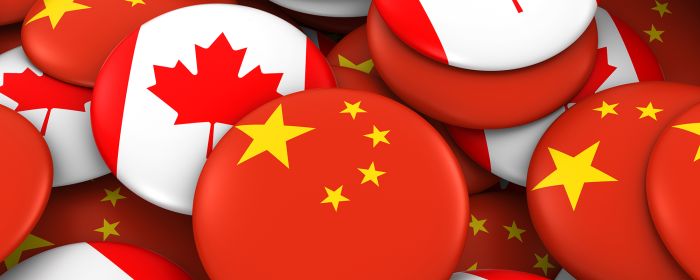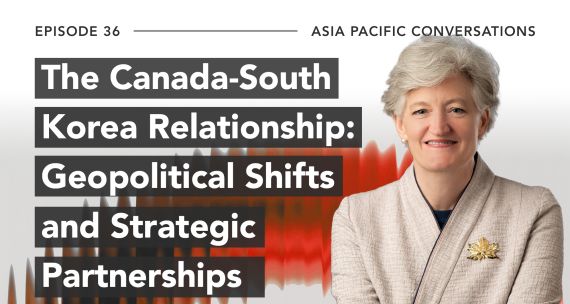"As you might read on the news, China is suffering from the coronavirus epidemic," begins an email from the Foreign Affairs Office of Zhongshan, a city in southeast China, addressed to the city council of Burnaby, British Columbia, dated February 3. The Zhongshan office then asks its sister city of nine years to help find and provide information about suppliers and producers of masks. Little did the senders and recipients know that Canada would soon encounter its own wave of COVID-19 infections. The ensuing scramble to supply health-care workers with masks, face shields, and gowns saw Canada adopt extraordinary measures such as using expired masks from its stockpile and hastily ordering personal protective equipment (PPE) from Chinese markets that can be “fraught with troubles.”
While Canadian struggles continue, the tide has turned in China. On April 12, two months after its letter to Burnaby’s city council, Zhongshan shipped 50,000 masks to three sister or friendship cities: Moriguchi and Nagasaki in Japan, and Markham in Canada. It’s not the only Chinese city to have done so either. By the end of April, five other Canadian cities had received PPE donations from their sister and friendship cities in China: Burnaby from Guiyang, New Westminster from Lijiang, Lethbridge from Anyang, Oakville from Huai’an, and Thunder Bay from Jiaozuo. One Canadian province – British Columbia – received PPE donations and procurement assistance through its sister province of Guangdong.
The donations from China beg the question whether twinning agreements – a channel of subnational diplomacy that is often maligned for its apparent lack of substantive return – can take on a more important role in Canada’s fight against COVID-19 and other strategic interests. Given the ongoing diplomatic tensions between Beijing and many of Canada’s allies, it would be prudent to tread carefully when dealing with China, even at the municipal level. Nevertheless, there is ample room for Canadian cities to get more out of their twinning connections during this pandemic, and in the future.
Canada-China twinning
The Chinese People’s Association for Friendship with Foreign Countries (CPAFFC), which compiles data on sister cities through the China International Friendship Cities Association, says that China had 2,629 city twinning relationships around the world as of last April. Among the relations, the most common types are sister city and friendship city relations. Friendship city agreements typically signal a lower level of financial commitment; unlike sister city agreements, they also sometimes have explicit expiry terms.
According to data collected by the Asia Pacific Foundation of Canada from city records and news reporting, as of 2020 there are 107 sister or friendship city agreements between Canada and China. Under these agreements, 66 Canadian cities have twinned with 80 Chinese cities, with some cities having multiple twinning partners. As the data shows, in recent years there has been a noticeable tendency for Canadian and Chinese cities to sign friendship city agreements rather than sister city relationships. Put together, the province with the most city twinning agreements is Ontario, followed by B.C. and then Alberta. The numbers may seem high, but there is a caveat: of the 107 twinning relations, only 45 are currently active, defined as having recorded at least one exchange since 2015.
Helping during a pandemic
In late January and February, as the novel coronavirus ravaged Hubei Province with escalating daily infections, cities in the rest of China faced the double whammy of budding local outbreaks and dwindling PPE supplies – existing stockpiles and production capacities were prioritized for Hubei, where they were the most needed. Feeling squeezed, theses other cities sent out calls for help – the Zhongshan email was among them – through their foreign affairs offices. Concurrently, some twinning partners of Chinese cities proactively reached out with letters of support and PPE donations. Japan, China’s largest twinning partner, initiated the bulk of such gestures, followed by South Korea, another major twinning destination for China. Donations ensued, easing some local shortages while creating a buzz on Chinese social media. The development was a welcomed change of pace, particularly for Japan-China relations, which have seen their share of testy moments in recent years.
As the battleground against COVID-19 shifted from China to the rest of the world, the direction of twinning-based assistance also reversed. Japan and South Korea were the first to receive donations from their Chinese counterparts, followed by EU countries such as Italy and Germany. A major difference in this phase was the scale. China was already producing half of all face masks produced in 2019, and within a month from February, it had quintupled its monthly production capacity. Bolstered by abundant supplies and a waning domestic outbreak, a growing number of Chinese cities are currently donating PPE to sister and friendship cities in a growing number of countries. It is not uncommon for a city in China to donate to multiple partners: by April, Guangzhou and Chongqing had each sent shipments of PPE to over 30 sister or friendship cities.
Untapped potential for Canada
Given the scale of the Chinese effort during this pandemic, there is a significant discrepancy between the number of Canada-China twinning ties and the benefit that Canada has received. Of the 80 cities in China that have Canadian sister or friendship cities, at least 41 have donated to cities in other countries. Of those 41 cities, 29 have active relations with their Canadian counterparts, but only six had donated to Canada at the time of writing. This was not for a lack of need. Montréal, for example, was absent from Shanghai’s list of 20 donation recipients, despite significant PPE shortages at its care homes and the fact that the two cities share an active sister relation of 35 years. Other notable examples include Toronto and Edmonton, both of which have active, long-standing twinning agreements with major Chinese cities, but have not received PPE donations from these partners.
In terms of PPE procurement, donations are not the only way that sister and friendship cities can help. Amidst reports that Canada’s federal and provincial governments have struggled to navigate the 'Wild West' of the Chinese medical supply market – numerous reports of “fakes, charlatans and price gougers” had prompted a Chinese government crackdown – it has dawned on many that local connections and know-how, important as they are during normal times, becomes essential when crisis strikes. But with most of their overseas staff pulled out of China, Canadian provinces are working without local support. This is where contacts cultivated through twinning relations can help. Information on companies, certificates, stock quantities, production capacities, and shipping times are better gathered by boots on the ground; moreover, linkages at the municipal government level can help to ensure that PPE sourced in China is up to standard and can clear customs quickly – an important task, given recent incidents of faulty masks and swabs from China.
Opportunities and challenges ahead in China twinning
For Canada, twinning with China comes with distinct political and practical implications as a result of differences in structure (geopolitics, governance, authority, process) and subjectivity (definitions, identity, culture, politics). For China, twinning is a component of a larger geopolitical top-down strategy to engage the world culturally, politically, and economically through supporting its Belt and Road Initiative or attracting foreign direct investment (FDI). In Canada, by contrast, these initiatives are generally driven from city-level interests and networks, such as business associations or cultural organizations. These fundamental difference in purpose and approach to twinning between the two countries could increase the risk real or perceived interference in Canada.
Some jurisdictions around the world, such as the Czech Republic and Sweden, have noted that the blurring of lines between national and local politics and interests can become a source of tension within twinning relationships. For example, Prague’s sister city relationships with both Beijing and Shanghai were cut in October 2019 and January 2020, respectively, over disagreements on Taiwan. And over the course of the last year, several jurisdictions in Sweden have cut ties with their Chinese counterparts as relations between the two countries frayed, principally over China’s detention and sentencing of a Swedish citizen accused of spying. The Swedish city of Gothenburg, an industrial and shipping hub that has attracted significant Chinese investment, cut its 34-year relationship with Shanghai last month.
Despite these incidents, as the COVID-19 pandemic is showing, subnational networks need not be pawns of national politicking. Japan, for example, has called for Taiwan’s participation in the World Health Organization since January, directly contradicting Beijing’s position. But Tokyo’s stance did not prevent Japanese and Chinese cities from helping each other with PPE donations. Twinning relations, when built and maintained with care, can serve both parties in times of crises. Canadian municipalities should take this opportunity to see if and how their twinning relations might help them mitigate COVID-related challenges. Beyond that, these municipalities could also begin a longer discussion about how best to expand or deepen connections with cities in other countries without jeopardizing community and national values, learning from countries with thriving twinning programs with China such as Japan and South Korea.






